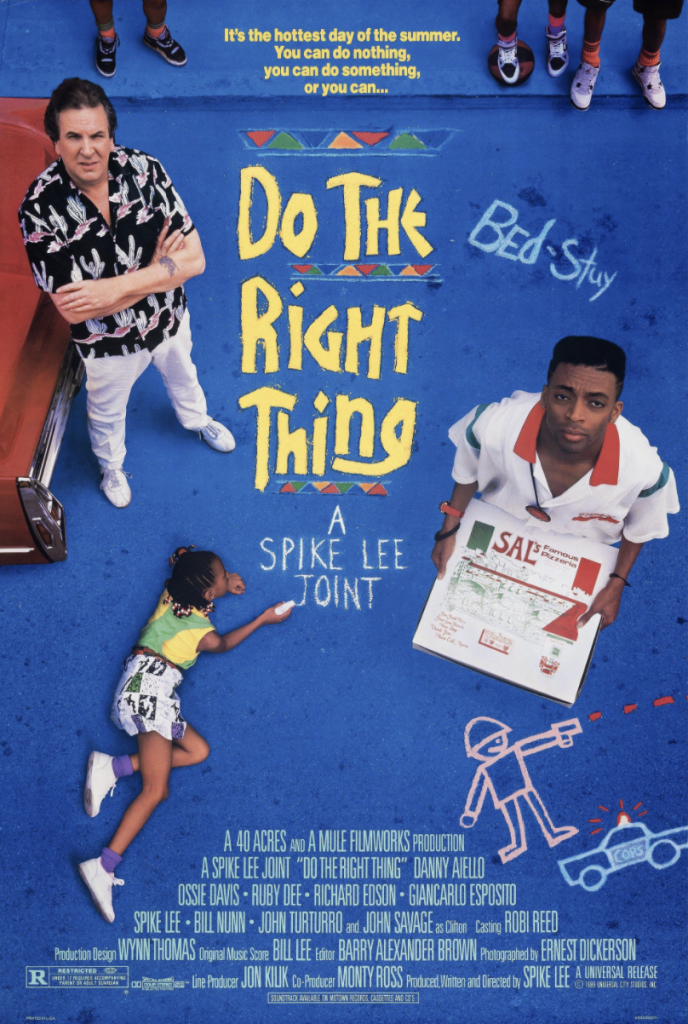“Do the Right Thing”
Unbroken Windows
February 4, 2022

Image Description: Seen from above on a blue street, a child is drawing “A Spike Lee Joint” in chalk under “Do The Right Thing” in big yellow letters. A white man stands to the left next to the trunk of a red car, with his arms crossed, and a younger Black man stands to the right, holding a pizza box. Both men look up at the camera. At the top of the frame above the main yellow words, it reads “It’s the hottest day of the summer. You can do nothing, you can do something, or you can…”
In the climax of director Spike Lee’s critically acclaimed 1989 film Do the Right Thing, a fight breaks out in a Bedford-Stuyvesant pizza parlor between local Black residents and the Italian owners of the establishment. Soon after police officers arrive on the scene, they kill Radio Raheem, an unarmed Black character played by Bill Nunn. In the moments of anger and disbelief that immediately follow this murder, the film’s main character, Mookie (played by Lee himself), throws a trash can through the parlor’s window, prompting an escalation in which many characters are injured, the building is set on fire, and firefighters eventually turn their hoses on the gathered crowd instead of the flames.
In this scene, Lee reverses Kelling and Wilson’s proposition. Rather than serious crime perpetrated by disinvested vagrants or community members with malicious intent, following the petty crime of breaking windows, here the destruction of property in the form of broken windows follows serious crime—committed not by community members but by the police themselves. This broken window, itself precipitated by the murder of innocent and unarmed Raheem, precipitates not just the weaponization of the fire hoses toward those protesting, but also critical reception of the film at the time that focused largely on the ostensible danger such a representation posed for what were deemed impressionable Black viewers.
“Unbroken Windows” traces the contours of a particularly potent moment of cultural production in New York City, with the aims of developing awareness of and promoting change in the impacts of policing in the spaces we inhabit. Understood from its inception as incomplete, the archive has been assembled in support of ongoing conversations that are reimagining what justice means—and how it is built—in the United States today. “Unbroken Windows” was produced in dialogue with the YoU’s themes of Care, Repair, and Justice during the summer of 2021 by the Temple Hoyne Buell Center for the Study of American Architecture at Columbia University, as a part of its ongoing project, “Green Reconstruction.” If you would like to participate and/or have suggestions for primary sources related to this ever-present, built history, please fill out this form and members from the “Unbroken Windows” team at the Queens Museum will be in touch.
Related Tags